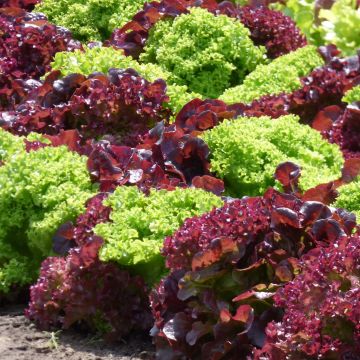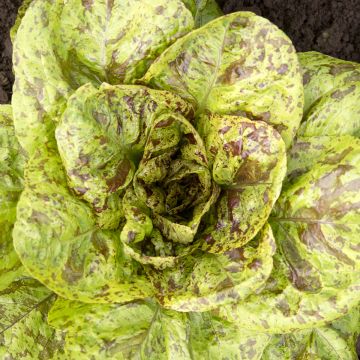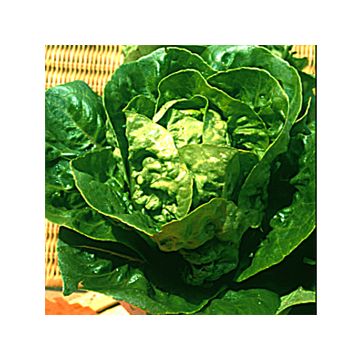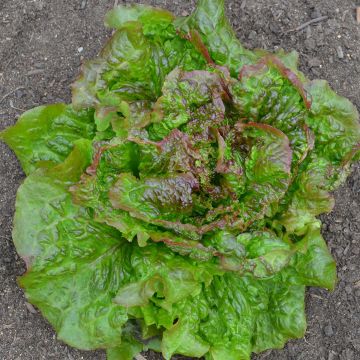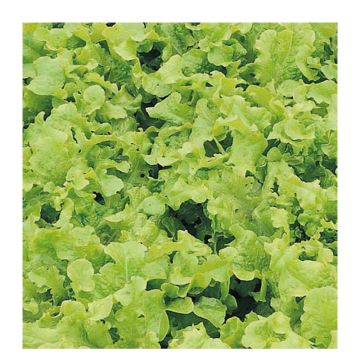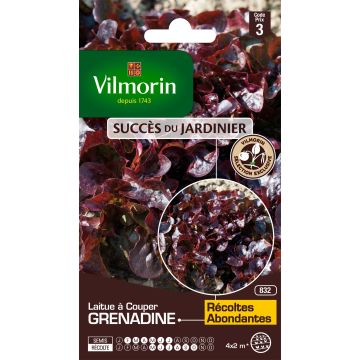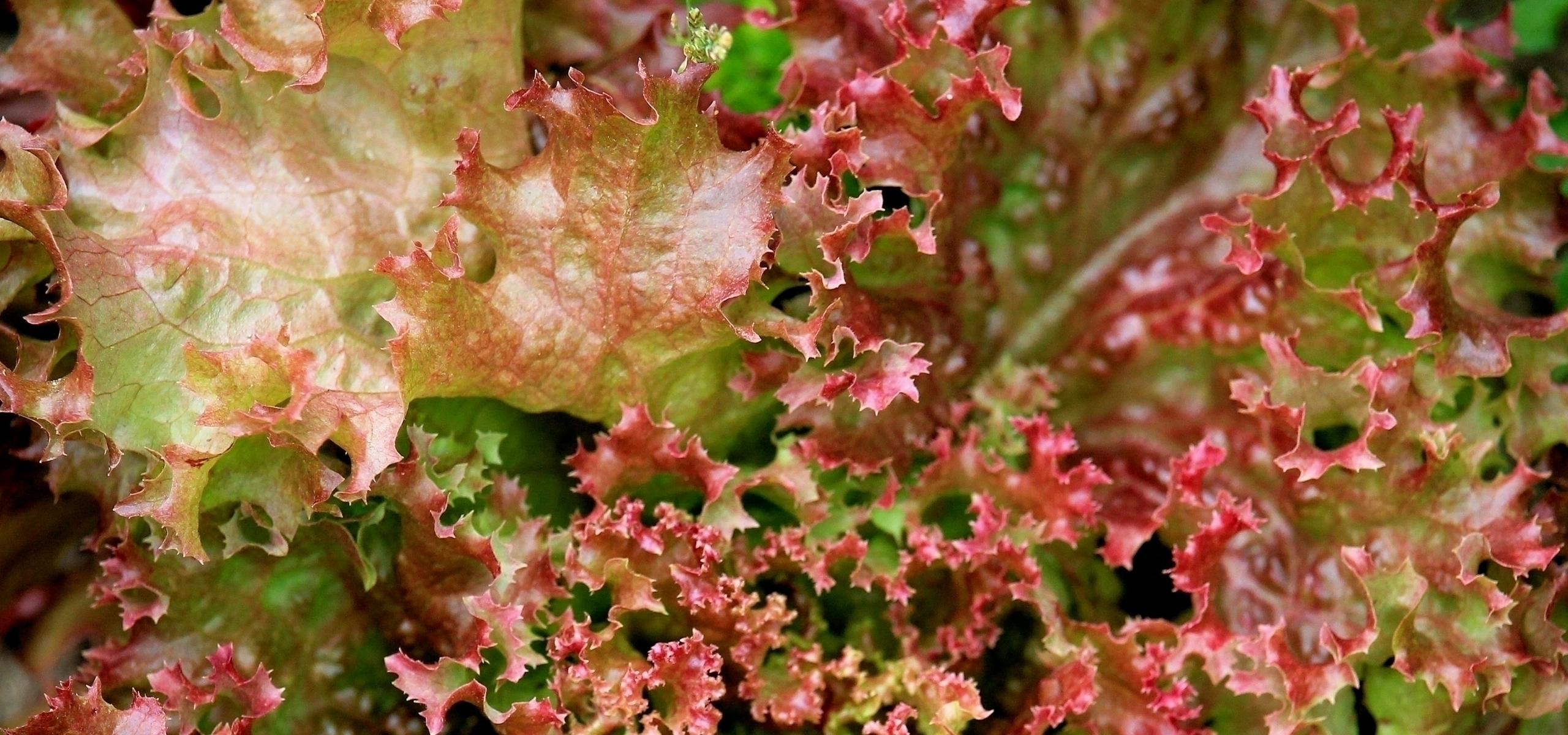
Succeeding in growing lettuces
From sowing to harvest
Contents
Essential in the vegetable garden, the lettuce is a highly appreciated salad for the fresh and crunchy flavour of its leaves. It comes in many varieties: batavia, romaine, butterhead, oak leaf… It has the advantage of being easy to grow and quick to produce. Discover all our tips for successfully growing lettuce, from choosing varieties to harvesting, including sowing, planting, and caring for your young plants.
Which variety to choose?
There are numerous varieties of lettuce, and the choice will depend on your tastes and the growing season. Here is an overview of the main varieties of lettuce:
- Butterhead lettuce: It forms a beautiful compact head, with tender leaves. It is suitable for growing in spring or autumn. Among the most well-known, you will find ‘Reine de Mai’ or ‘Sucrine’.
- Batavia lettuce: Its leaves are slightly crisp, and it is less sensitive to bolting. You can try ‘Rouge Grenobloise’ or ‘Dorée de printemps’.
- Romaine lettuce: More elongated, this variety offers crisp leaves and withstands heat well. Discover, for example, the variety ‘Verte Maraîchère’.
- Cutting lettuce: This lettuce does not form a head. You cut the leaves as needed, and they regrow. Ideal for continuous harvesting, you can grow ‘Oak Leaf’ or ‘Salad Bowl’.
It is important to choose your variety carefully: each lettuce corresponds to an ideal sowing and growing period. While some are “versatile”, like ‘Merveille des 4 saisons’, and can be sown for a large part of the year, others, like Batavia ‘Dorée de Printemps’, do not tolerate heat. Similarly, some lettuces like ‘Grosse Blonde Paresseuse’ will not withstand the cold.
Read also
How to succeed in sowing salads?Where to install lettuces?
Lettuce thrives in cool, sunny spots, but it fears intense heat. Ideally, choose a location where it will receive morning sun and some shade in the afternoon, especially in summer. If you live in a hot region, favour a shaded area or opt for cultivation under a shade cloth.
In the vegetable garden, lettuce enjoys all rich, cool, and light soils, neutral or slightly acidic. It does not like having its roots in water, so avoid areas where water tends to stagnate. A clayey-sandy soil enriched with well-decomposed compost or manure will be ideal for its cultivation. If you are growing it in a pot, ensure that the container is large enough (at least 15 cm deep) and drill holes in the bottom for good drainage.
Lettuce is a “good companion”; it pairs well with all other vegetable plants.
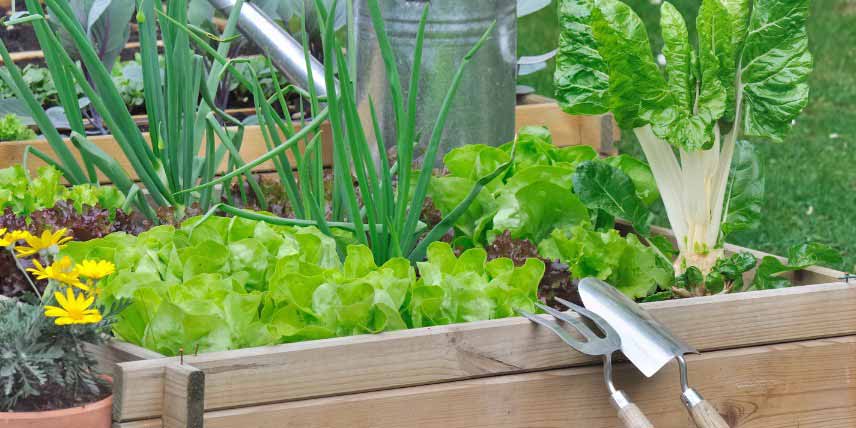
Discover other Lettuce
View all →Available in 1 sizes
Available in 1 sizes
Available in 1 sizes
Available in 1 sizes
Available in 1 sizes
Available in 1 sizes
Available in 1 sizes
Available in 1 sizes
Available in 1 sizes
Available in 1 sizes
When and how to sow lettuces?
Sowing of lettuces takes place from February to October, depending on the varieties. It can be done in open ground or under cover, depending on the season. Here are the key steps to successfully carry out your sowing:
- Under cover (in a greenhouse or indoors): Sowing can begin as early as the end of winter (February-March) under cover. Sow the seeds in buckets or trays, using a light mix of potting soil and sand. Sow sparsely, then lightly cover with soil and water. Keep the seedlings at a temperature of around 15°C, and water regularly.
- In open ground: As soon as frosts are no longer a concern (April-May), you can sow directly in open ground. Create shallow furrows (about 1 cm deep) spaced 30 cm apart and sow the seeds. Cover with a thin layer of soil and lightly firm down.
Remember to space your sowings a few weeks apart to stagger your harvests throughout the season.
Read also
Succeeding in growing saladsHow to plant lettuces?
Once your sowings have emerged, or if you have purchased young plants, you can transplant them into the ground or into pots. Transplanting is generally done when the plants have 4 to 5 leaves and the risk of frost has passed. When setting them in the garden, be sure to respect the planting distances: lettuces need space to develop.
- Work the soil to loosen it to a depth of about 20 cm and add well-matured compost to enrich the substrate.
- Dig a hole using a trowel and place your young plant in it. The collar (the base of the stem) should be level with the soil. Depending on the variety, space your plants 25 to 30 cm apart for butterhead and batavia lettuces, and 15 to 20 cm apart for cut lettuces. This gives them enough room to grow.
- Lightly firm the soil around the base.
- Water generously.
- Feel free to add a layer of mulch around your lettuces.
→ To learn more, read our article: “When and how to transplant lettuces and salad greens in the garden?“.
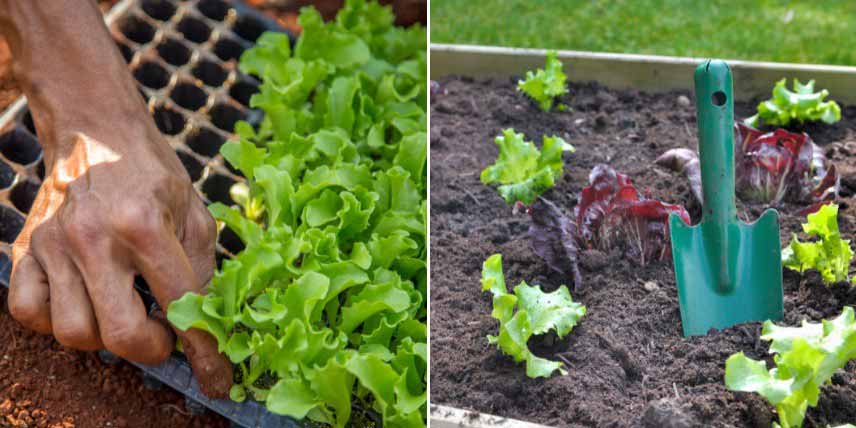
How to care for them?
The regular maintenance of lettuces involves performing weeding and hoeing regularly, as well as some watering, if necessary. These operations can be spaced out or greatly reduced if you mulch the soil with thin successive layers of dried grass clippings, mixed, if possible, with fallen leaves.
In summer:
During heatwaves, lettuces exposed to full sun tend to wilt. Remember to shade them with overturned crates. You can also intersperse your plants at the foot of climbing beans, cucumbers, and squashes: their foliage provides beneficial shade.
In periods of heat and drought, lettuces can prematurely run to seed: they develop their flower stalk to produce seeds. “Running to seed” results from water stress associated with a “heatwave”. To counter this phenomenon, simply water regularly and apply a thick mulch to keep the soil cool. There are varieties selected for their resistance to running to seed, such as Batavia ‘Kinemontepas’ or butterhead lettuce ‘Craquerelle du Midi’. This is a good way to stack the odds in your favour: don’t miss out!
In winter:
To protect your winter and early spring lettuces from the cold, you can place them under a frame, under a Nantes tunnel, or more simply, use a fleece cover to gain a few degrees.
⇒ Find our tips in our advice sheet: growing lettuces under cover
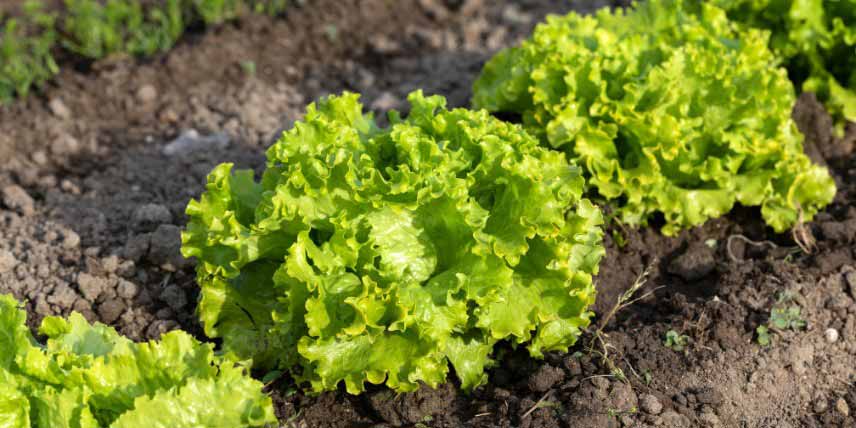
What are the pests and diseases of lettuces?
Lettuce is often preyed upon by slugs and snails. The most effective method of control is the use of Ferramol. This slug repellent is safe and suitable for organic farming. Anticipate by spreading the pellets two to three weeks before sowing or planting to get rid of them as early as possible.
Lettuce can sometimes be affected by various fungal diseases such as Grey Rot (Botrytis cinerea) and Lettuce Downy Mildew (Bremia lectucae). These diseases are favoured by a humid climate, as well as by confined environments. To avoid them, do not water by spraying the lettuce and ensure proper planting distances are maintained.
How to harvest them?
The harvest of lettuces depends on the variety grown:
- Head lettuces and Batavia lettuces: These are harvested all at once when the head is well-formed. You can cut the lettuce at soil level, or lift it with a knife, taking care not to damage the roots if you wish to allow the young plant to regenerate (although this method is less common for head lettuces).
- Cutting lettuces: These can be harvested as needed. Cut the outer leaves, leaving the heart intact, which will allow the plant to regrow.
Lettuce is a fast-growing plant, with some varieties ready for harvest as early as 6 to 8 weeks after sowing. For a continuous harvest, sow new seeds every 15 days to three weeks.
- Subscribe!
- Contents































